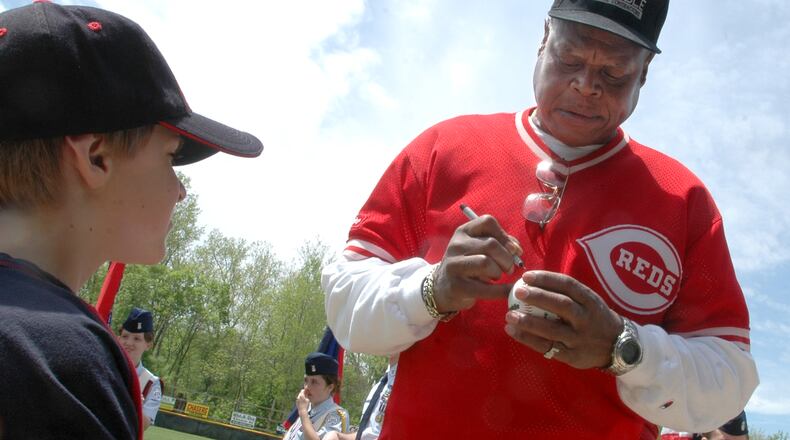»RELATED: Reds Hall of Famer Lee May dies at age of 74
He is probably best known by Cincinnati Reds fans because he was part of the mammoth trade that sent him and Tommy Helms to the Houston Astros in 1972 that brought Joe Morgan, Cesar Geronimo, Jack Billingham and Ed Arbrister to the Reds, the final pieces of The Big Red Machine. By trading May, general manager Bob Howsam made room at first base for Tony Perez, who played third base when May was with the Reds.
May, though, was an integral part of the embryonic stages of the Big Red Machine as the team’s first baseman in 1970 when the Reds began the season 70-30 and won 102 games to win the National League championship. They lost the World Series to the Baltimore Orioles in five games.
It wasn’t May’s fault, though. That World Series is best remembered for the incredible defensive play by Orioles third baseman Brooks Robinson, May hit .389 and set a World Series record for five games with eight RBI. And his three-run homer provided the Reds with their only win.
It was the eighth inning of Game 3 and the Reds trailed, 5-3. With two on in the eighth inning, May ripped the first pitch offered by Orioles relief pitcher Eddie Watt for a home run that gave the Reds a 6-5 lead and they hung on.
After the game, May said, “I knew it was gone as soon as it hit it and the only thing I could think about as I ran the bases was how fortunate we were. When I got back to the bench I was still so thrilled and amazed that all I saw were people’s faces and all I heard were sounds.”
May, 74 , died Saturday night after a long illness.
He was a favorite of Pete Rose and they enjoyed taunting each other. May had an overabundance of forehead and Rose delighted in calling ‘Fivehead.’
May and Helms both loved Cincinnati and after their careers ended both moved back to Cincinnati and stayed there.
I was chairman of the Cincinnati chapter of the Baseball Writers Association of America for 21 years. At the time, the BBWAA elected the members of the Cincinnati Reds Hall of Fame. I pushed hard for May and he was elected. He found out about my small part of his induction — he earned it on his own — and never forgot it. He must have thanked me 100 times, every time he saw me.
After his induction he was, as always, a humble man, and said, “I never though I’d make it. I gave up on it. I’ll always be a Red at heart because that’s where I got my start, my first major league game. I have a lot of good memories and I have a lot of good friends It was a fun town to play in.”
It wasn’t so fun on that day he was told he was no longer a member of the Reds, that he was headed to the Astros.
“That probably was the worst point of my life,” he said after he retired. “I had never played with anybody but the Reds. We had gelled together and all of a sudden I got traded, kicked out of the house. It took a long time for me to get over it.”
Actually, he never did. But he went on to have a productive career. He played for the Astros, Orioles and Royals. After retiring after the 1982 season, he became the batting instructor for the Royals. He eventually returned to the Reds as a popular coach in 1988 and 1989 on manager Pete Rose’s staff.
For his 18 seasons, May batted .267 with 354 home runs and 1,244 runs batted in. From 1969 through 1971 he hit 38, 34 and 39 home runs for the Reds. Then he was traded before the 1972 season.
Ted Kluszewski, another Reds Hall of Fame first baseman and former hitting coach, said of May, “He might get fooled on a pitch, but on that same pitch the next time he sees it he’ll knock it out of the park.”
And May knocked it out of the park as a human being. Rest in peace, old friend, rest in peace.
About the Author
